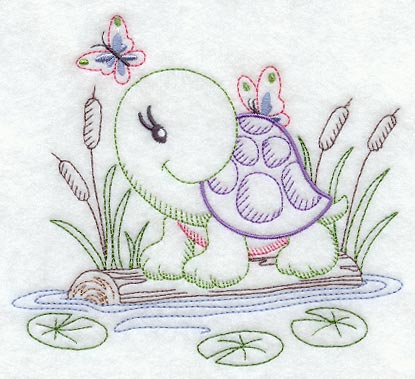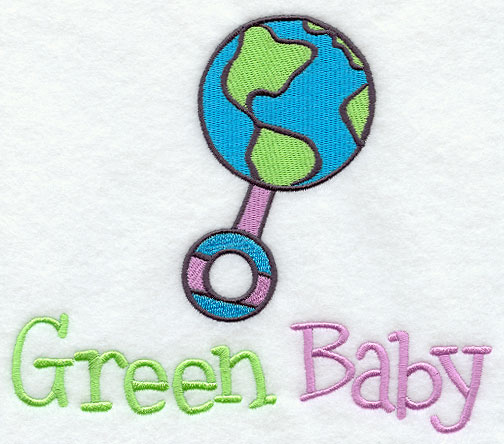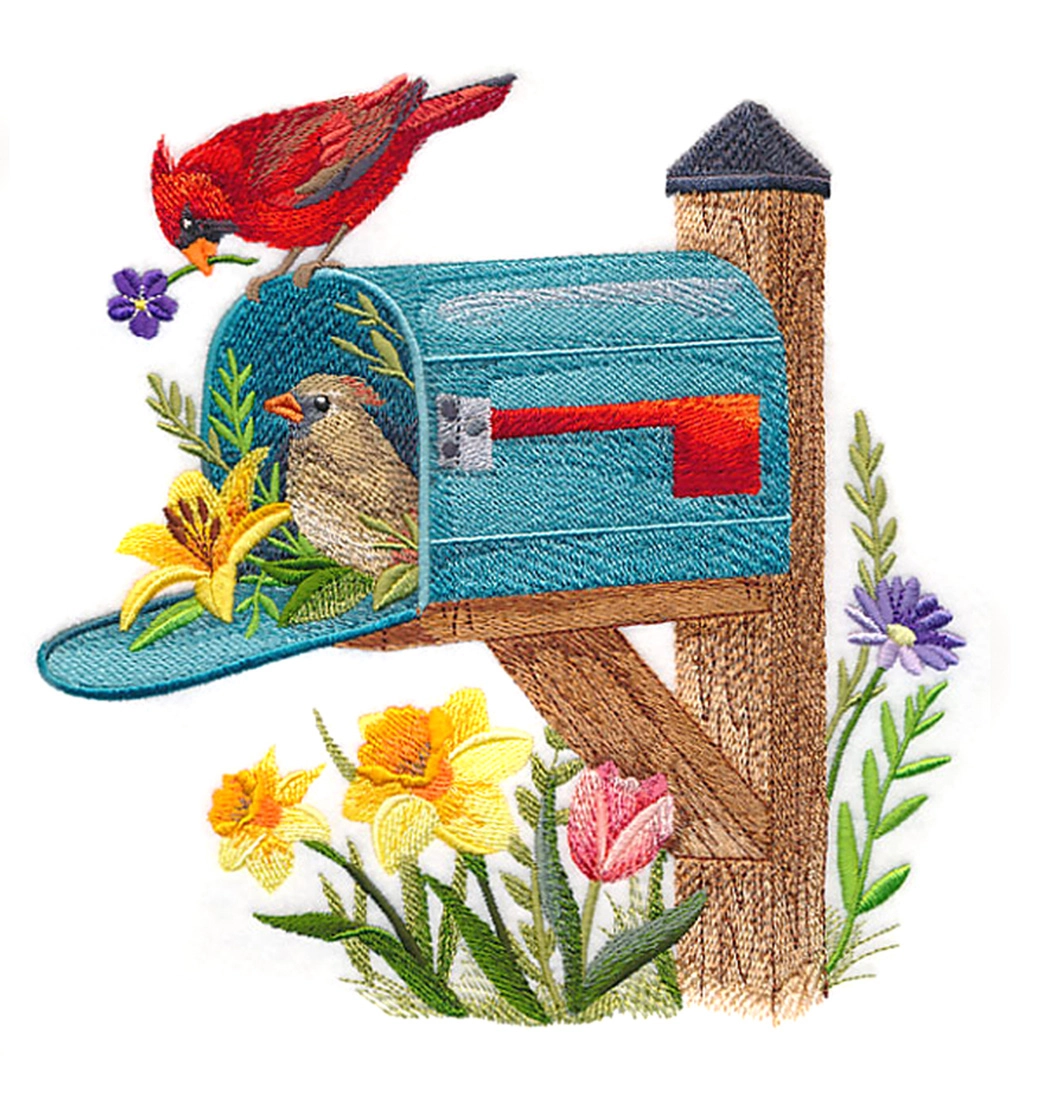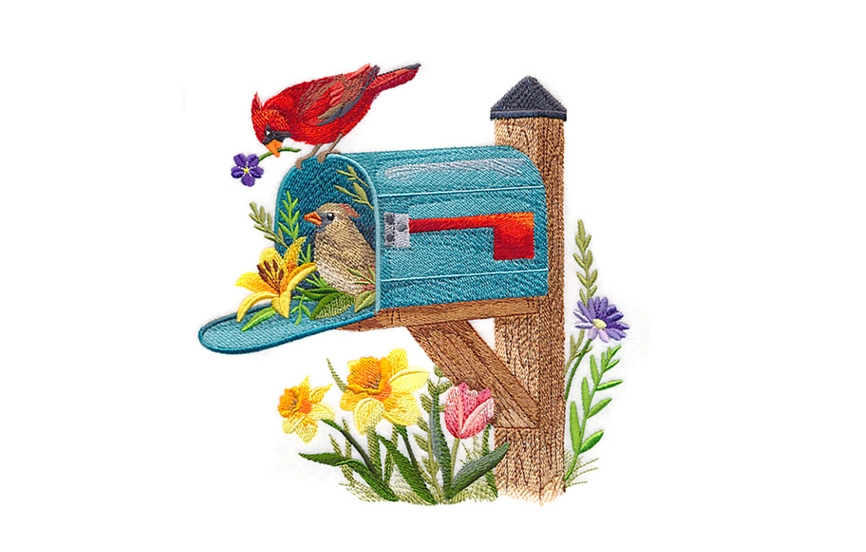Designs Used
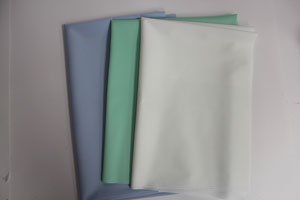
PUL - the full name is polyurethane laminate - is becoming a popular choice for embroiderers and sewists
to use in baby projects.
One side of the fabric is soft, while the other side is laminated, and water-resistant.
Because of its water resistant quality, PUL is often used in cloth diapers, diaper covers, bibs, changing pads, diaper bags, and wet bags.
PUL is found in several varieties, such as a polyester knit, a cotton and polyester blend, or 100% cotton. You may see PUL in several thicknesses (the thickness refers to the millimeters of laminate).
I found PUL fabric at JoAnn Fabrics, Fabric.com, Very Baby, and Celtic Cloths.
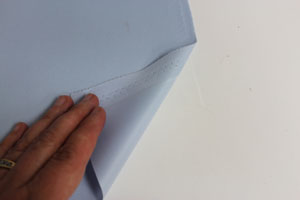
As I mentioned before, PUL has two sides -- the softer, fuzzy fabric side, and the rubbery laminated side.
Generally people embroider on the soft fabric side of PUL. (If you do embroider on the laminate side, use a water soluble topping to help the presser foot move smoothly.)
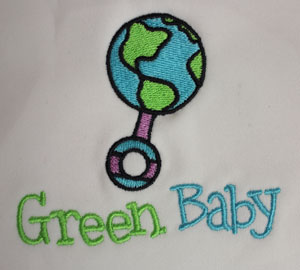
The PUL I worked with for this article was a polyester knit, and the thickness was 1 mm. This example is the Green Baby design -- a natural choice for reusable PUL!
The thickness of PUL that you choose will depend on what you're making.
When making a diaper cover, for example, a thickness of 1 - 2 mm is recommended. The pattern that you're working with will probably give a recommendation for thickness.
The tips in this article will work for all thicknesses of PUL.
Pre-washing PUL
PUL does not shrink, so pre-washing before embroidering is not necessary. We washed and machine-dried our samples several times after stitching them, and none of them shrank.
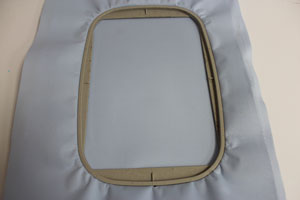
Hooping
Hooping PUL is pretty easy, as the fabric is thin. Because it's slightly stretchy, make sure the fabric is smooth inside the hoop before tightening the hand screw. Stretching the fabric once the hoop is tightened may lead to puckering or gapping once the fabric relaxes again outside the hoop.

Needle Choice
When embroidering onto PUL, choose the smallest sized needle available. Because PUL is meant to be water-resistant, and because needles will put holes in that water-resistant fabric, you'll want to make the smallest needle perforations possible.
I used a 75/11 sharp needle (a sharp needle has a finer point than an embroidery needle) in the samples. That made small perforations, and nice clean stitches, as the Happy Lion in this example shows.
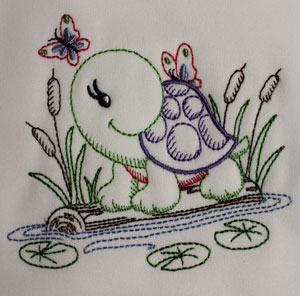
Design Choice
With its tight weave and laminate backing, PUL supports designs of nearly any complexity. However, keep in mind that the fabric is designed to be water-resistant. The fewer the stitches, the more the integrity of the fabric will be preserved.
I stitched several designs with varying complexity, and all designs, from complex to light (like this Turtle and Butterflies (Vintage) design) performed very well.
For this example I used one piece of cutaway stabilizer, and a size 75/11 sharp needle.
If you have your heart set on using a more solid or complex design, but are concerned about the fabric remaining water-resistant, simply add a second layer of PUL inside the embroidered area; or, stitch a patch of PUL on the back side of the embroidery.
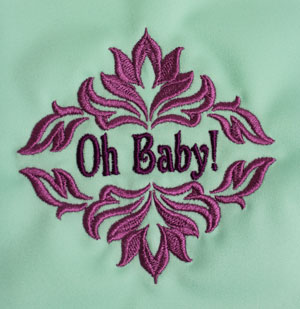
Stabilizer
I tested PUL with both cutaway and tear-away stabilizer. The example shown to the left is the Damask Oh Baby design, and the fabric is backed with a piece of tear-away stabilizer.
You can see that the fabric is slightly puckered. Tear-away stabilizer is designed to "tear away" quickly after embroidering. But the needle perforations disintegrate the stabilizer during embroidery, leaving nothing behind to support the fabric. The tension of the stitches causes the fabric fibers to draw together, and that results in puckering.
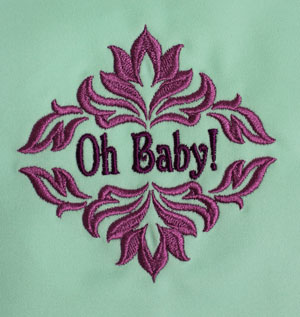
Here is the Damask Oh Baby! design. This time the PUL is backed with a piece of cutaway stabilizer. The stronger surface of the cutaway stabilizer supports the fabric under the weight and tension of the stitches, resulting in a smoother look.
Even though the results with tear-away were acceptable, I'll still choose cutaway stabilizer when working with PUL. Items made with this fabric will be laundered often, and cutaway stabilizer will preserve the integrity of the design through wash and wear.
